Going to Shrewsbury Folk Festival for the first time, I was unsure what to expect: would the atmosphere be relaxed or rowdy? Would there more families, older people, or young people? Would it all be performances, or would there be chances to learn something new? As it turned out, Shrewsbury Folk Festival struck a perfect balance between all of these: the afternoons were chilled, with each night building into an energetic party that still didn’t lose the sense of safety I felt throughout the festival; there were people of all ages at the festival: the amount of choice for things to see and do meant that you could tailor your festival experience to include watching music and dance, to learning a new instrument or perfecting a familiar one, to learning a new cèilidh or Molly dance.
The festival realised the synergy between the traditional and modern. By bringing together traditional music and dance along with acts who used folk as a starting point for further adventures, it surpassed what I had expected of a folk festival.
As soon as I stepped within the festival I was greeted by a sea of khaki tents and primary-coloured flags; the smell of nylon and steel from the camping areas mingling with the delicious smells of the Food Tent. Walking around the paths lined in festival flags (a joint effort of the festival and festival-goers) my feet couldn’t help but fall in time with the beat of the fiddle and drum; the earthiness of the music perfectly complemented by the rural location. The festival felt like a perfect return to nature in every possible way. It was idyllic. A breeze wafting through the flags and rag ribbon bunting made it feel as though the colours themselves were flying; and even when it rained, it sparkled.
As Friday’s music kicked off, I happened upon Siskin tent where the listeners and musicians formed no separation. Instrumentalist and observer, young and old alike, including those from the National Youth Folk Ensemble, all were there for the joy of music. There was a certain romance to it all, sitting on the grass in the sun, listening to conversations in music.
On the Purity Village Stage Caleb Richards' hypnotic melodies, Good Habits’ alt-folk exploration, and Trefusis’ folk from around the world mellowed out the afternoon. Whilst in the morning the Village was filled by jangling bells as there were Morris, Molly, and many other traditional dance performances and workshops, including a tremendously fun Molly dancing workshop, with everyone getting the steps wrong, but having a great time all the same.
In the Sabrina on Friday Dan Walsh showed the synergy of using a banjo like a sitar to play a reel, which utterly blew me away. Whist on Saturday in the Sabrina Track Dogs were called back again and again for encores that really got the Saturday party started; with George Hinchliffe’s Ukulele Orchestra of Great Britain providing an exuberant and humorous end to Saturday’s night of music at the Bellstone stage.
Messages of love, acceptance and hope were imbued into the festival sets this year: The Unthanks led the audience in a choral performance of “sorrows away,” while on the Main Stage on Saturday Namvula and the audience sang a repeated refrain of “love” to each other, before breaking out into an all out Zambian-Scottish dance party; and on the same stage the day before Thea Gilmore had sang “don’t dim your light for anyone” as the crowd was bathed in the blue glow from the lights and screens and sung the refrain back at her, the moment roofed by the last twilight glow of the day. The sunset sets on Turtle Doves stage felt like the best kind of after-party: mellow, reflective, philosophical; a pleasant contrast to the energetic reels and jigs of the ceilidhs in the dance tent
With a full program of dance performances, workshops and Cèilidhs for everyone of all ages to get involved in, you could easily go to the festival and never even see any music, there was that much to do. Saturday morning and early evening was filled with performances of Morris and Molly dancing, as well as stepping from the likes of JD & Folk, whose humour concealed the complexity of their improvised performances.
After the night’s music ended, spectators and artists hit the dance tent to round the evening off with the extremely chaotic fun of even more cèilidhs. We spent the night linking hands and arms with folks who, outside the festival would simply have been strangers, but here, in the fairy-light glow of the dance tent, were friends of spirit and movement. So rarely is there so keen a sense of community with those with whom no word has ever passed between: it was as though, as we wove between each other and our feet drew ancient patterns on the sprung floor, we wove and bound something of our essences together too; so that those people who were previously unknown, untrusted, other, were now comrades and friends, loved simply for being another human being experiencing life, an experience which currently involved galloping around a tent in Shropshire to the tune of a fiddle.
Overall, the festival could not have been better: the rediscovery of traditional forms of connection a perfect escape from the craziness of the modern world.


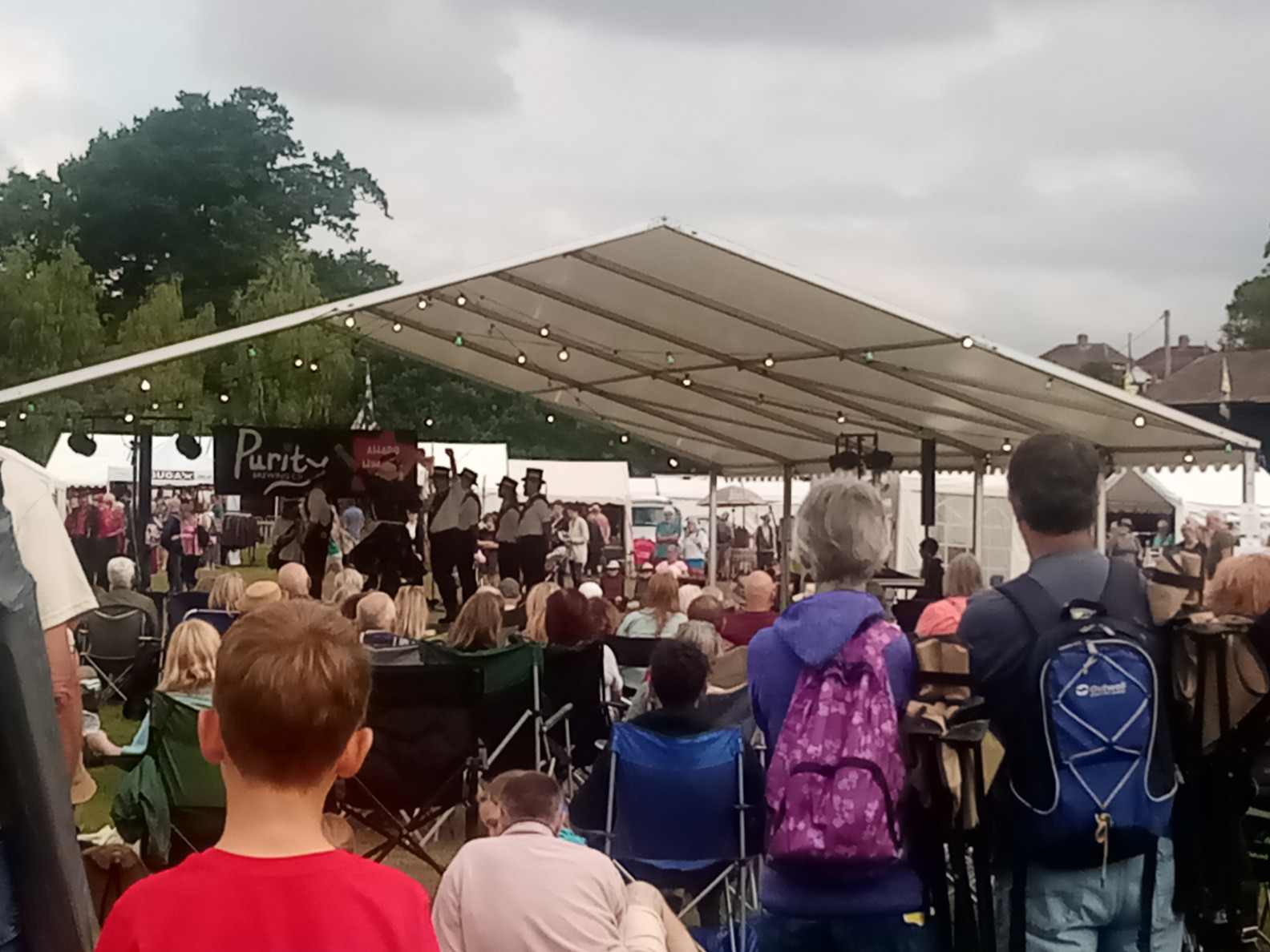




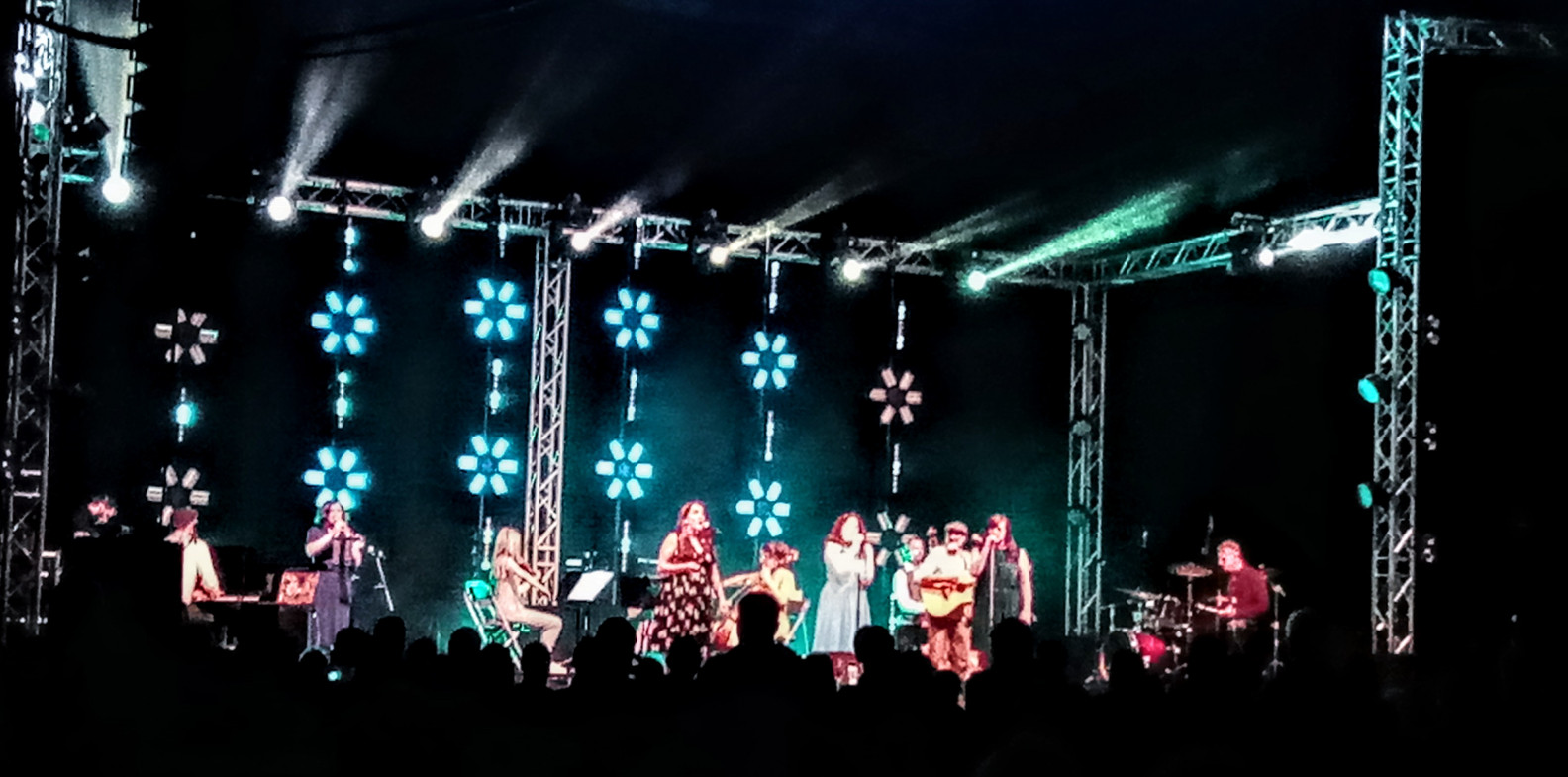


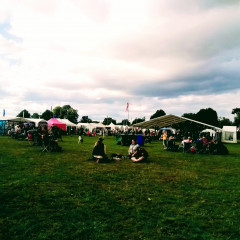
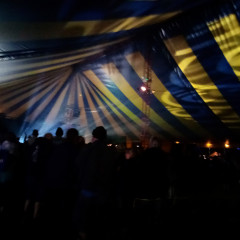

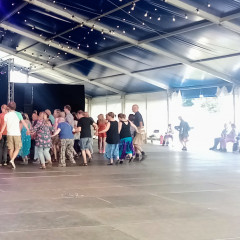



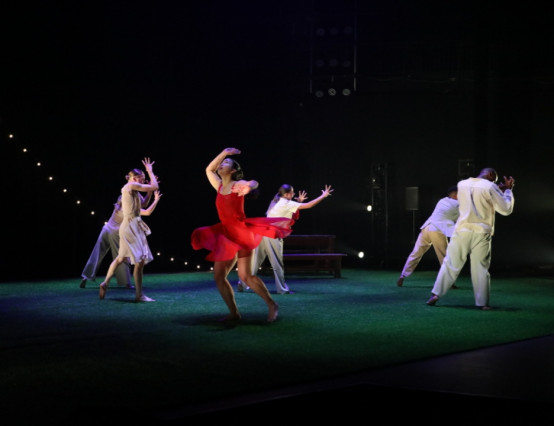





Fabulous review Mystaya, you really capture the essence of the festival.